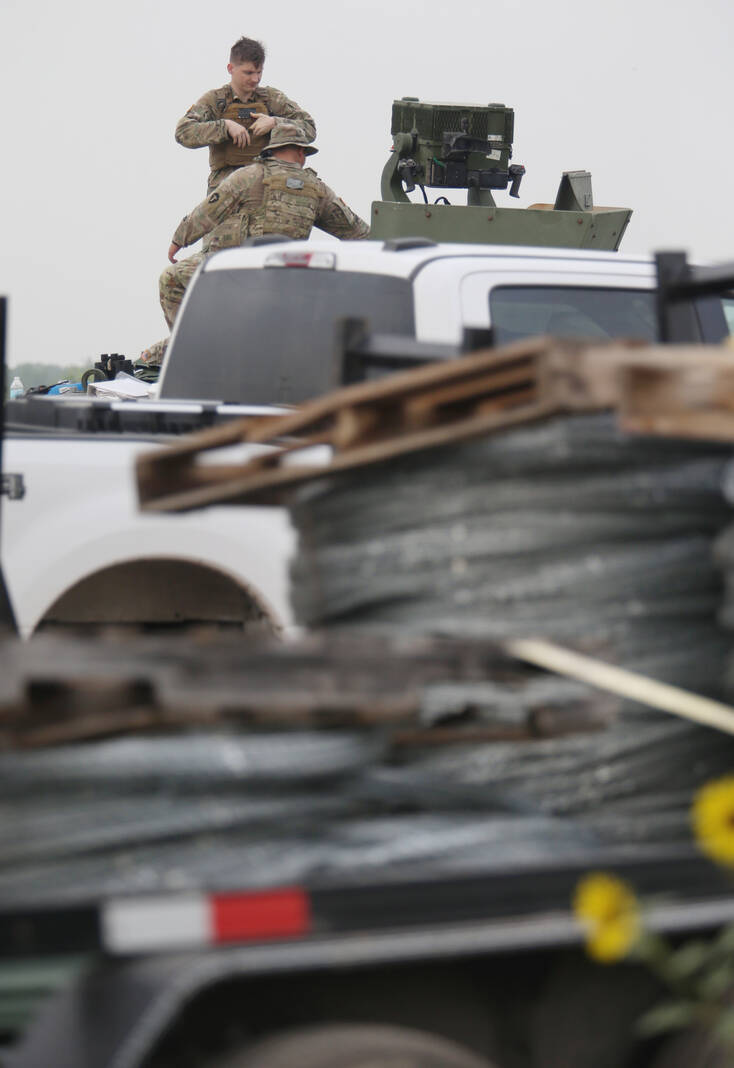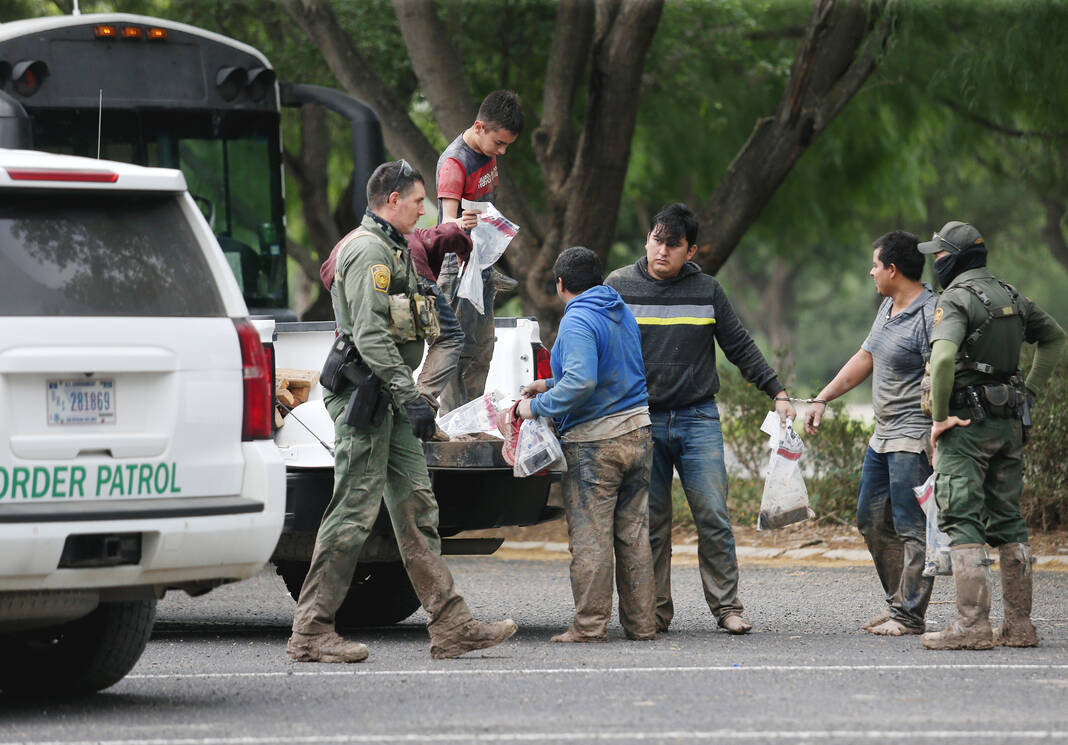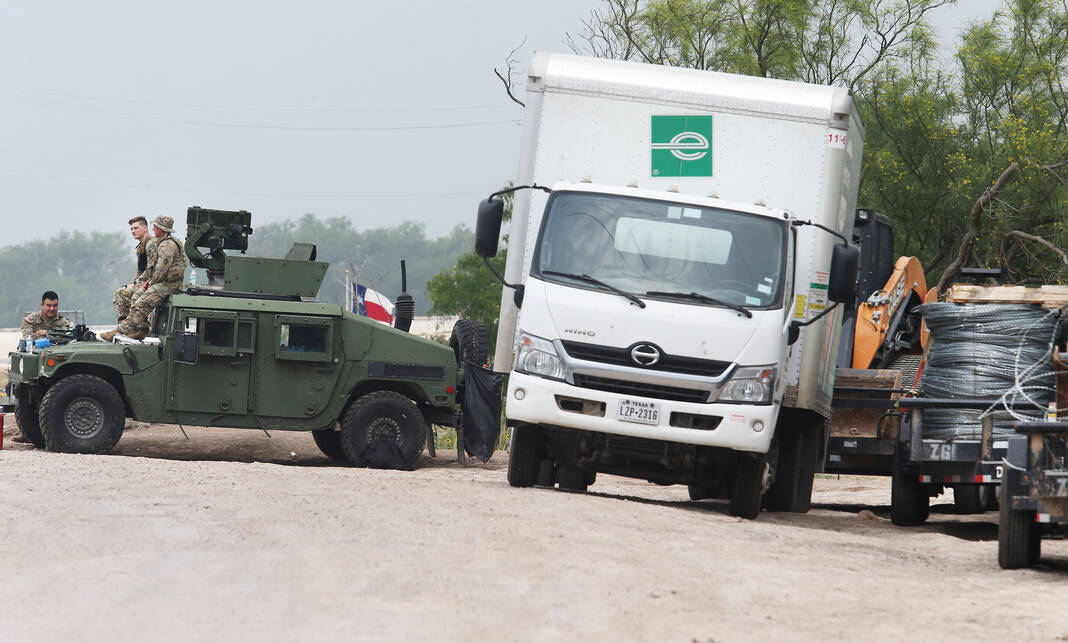|
Only have a minute? Listen instead
Getting your Trinity Audio player ready...
|
Stacks of razor-sharp concertina wire, or c-wire, sat coiled up on a flatbed trailer parked at the entrance of federal property in Mission on Friday — a representation of the governor’s border security partnership with local landowners.
National Guard members, weapons in hand, sat atop their reinforced vehicle watching the road with a posted sign warning visitors to stay out of federal property, the wire dimly glimmering under the overcast skies. For some landowners, this is a welcome sight.
“Landowners feel abandoned by the federal government,” Susan Kibbe, executive director of the South Texas Property Rights Association, said Friday.
As of Friday afternoon, the state had struck agreements with private property owners to install over 78 miles of fencing along the border, according to Texas Military Department Major Michael Perry.
The 27 miles of completed fencing are visible on the borders of Eagle Pass and Del Rio, where large groups of Haitians ingressed in September.
So far, only about 8 miles of the concertina wire has been installed in the western part of the Rio Grande Valley.
“C-wire is being installed right now in Hidalgo along the River in Mission,” Perry added. “I just took a boat tour and saw it. The majority of the C-wire already installed is in east Starr County, coming back toward Hidalgo in the La Grulla area.”
Adding deterrent measures became a centerpiece strategy of Gov. Greg Abbott’s border security plans he first unveiled in June last year. Those efforts were ramped up last month when he announced an expansion to his multi-layered plan.

During that April 6 meeting, Texas Military Department Maj. Gen. Thomas Suelzer said their engineering approach will rely on concertina wire hastily deployed in low water crossings, high-traffic areas and will be used to create holding areas.
Environmentalists expressed concern over its impact on natural wildlife.
Landowners, however, plan to use the razor-woven curved steel as a barrier to divert immigration traffic, Kibbe said.
“They’re wanting to repair their property, to move traffic to other areas,” Kibbe said, referring to landowners.
Ranchers and farmers have mixed feelings on whether to allow the state to place barriers of any kind on their property, but those who decided to work with Abbott reached out or were contacted by the government to volunteer their land.
“Farmers don’t want their lands stamped upon. It’s a high-dollar enterprise. They just want to protect their property from trespassers,” Kibbe said.

Preparations are underway in anticipation of changes to a public health policy known as Title 42, which prevents migrants from seeking asylum in the U.S. It’s been leveraged over a million-and-a-half times since the start of the pandemic to expel migrants upon entering.
As the pandemic recedes, the federal government plans to return to established immigration policies that legally allow migrants to seek asylum upon reaching U.S. territory.
While politicians squabble over throttling back the policy, the Texas Border Coalition recently joined Hidalgo County Judge Richard F. Cortez in inviting President Joe Biden to visit the border before the changes go into effect and urged broad bi-partisan immigration changes.
“By coming to the border, we hope you can boost momentum for passage of the many bipartisan reform bills now pending in the U.S. Senate,” Cameron County Judge and Texas Border Coalition Chairman Eddie Treviño Jr. said in the letter sent Thursday.




